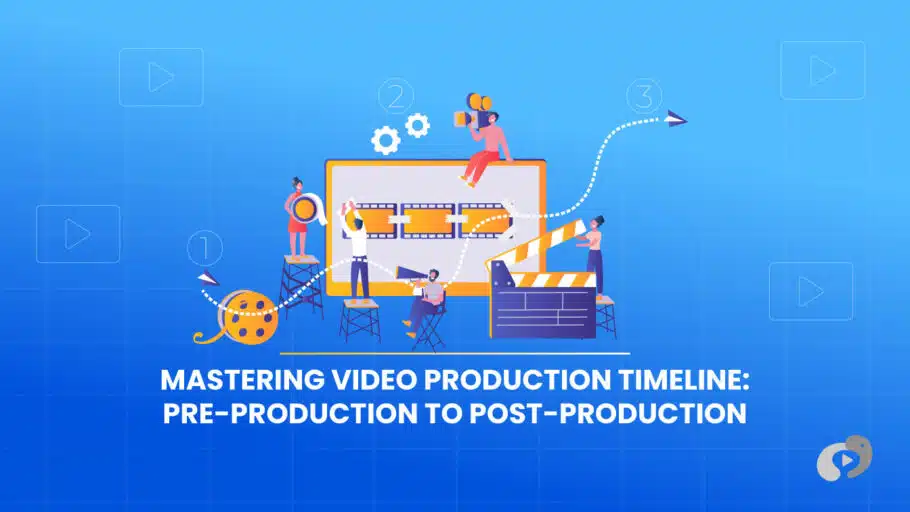Last Updated on February 6, 2025
Article Contents
Estimated reading time: 12 minutes
Video Production Timeline: History & Step-by-Step Process
Video production timelines are essential frameworks that outline the various stages involved in creating a video, from the initial concept to the final product. Understanding both historical and modern timelines in video production is crucial, as it provides insight into how the industry has evolved and the advancements in technology and techniques. Historically, video production involved more manual processes and longer turnaround times, while modern timelines benefit from digital innovations and streamlined workflows. Having a structured timeline is vital for successful video projects, as it ensures each phase, from pre-production to post-production, is meticulously planned and executed. This structure helps to manage resources efficiently, meet deadlines, and deliver a polished final product.
What is a Video Production Timeline?

A video production timeline is a detailed schedule that outlines the specific stages and tasks involved in creating a video, from conception to final delivery. This timeline includes critical phases such as pre-production, production, and post-production. Each phase consists of numerous tasks—for instance, scriptwriting, location scouting, shooting schedules, and editing—that need to be completed sequentially or in parallel to achieve the desired outcome. The timeline is typically developed in collaboration with key stakeholders, including directors, producers, and crew members, to ensure that every aspect of the production process is accounted for and timelines are realistic. Understanding the timeline is crucial when working with a startup video production company to create high-quality content.
Having a video production timeline is essential for the successful planning and execution of video projects. It acts as a roadmap, guiding the team through each phase of production while ensuring that resources are allocated efficiently and deadlines are met. A well-crafted timeline helps to identify potential bottlenecks or issues early on, allowing for proactive problem-solving and adjustments. Moreover, it ensures that everyone involved understands their roles and responsibilities, which fosters better coordination and communication among team members. Ultimately, a structured timeline contributes to a smoother production process and a higher-quality final product, enhancing the overall effectiveness and professionalism of the project.
Industries we serve
Phase 1 of Video Production Timeline: Pre-Production
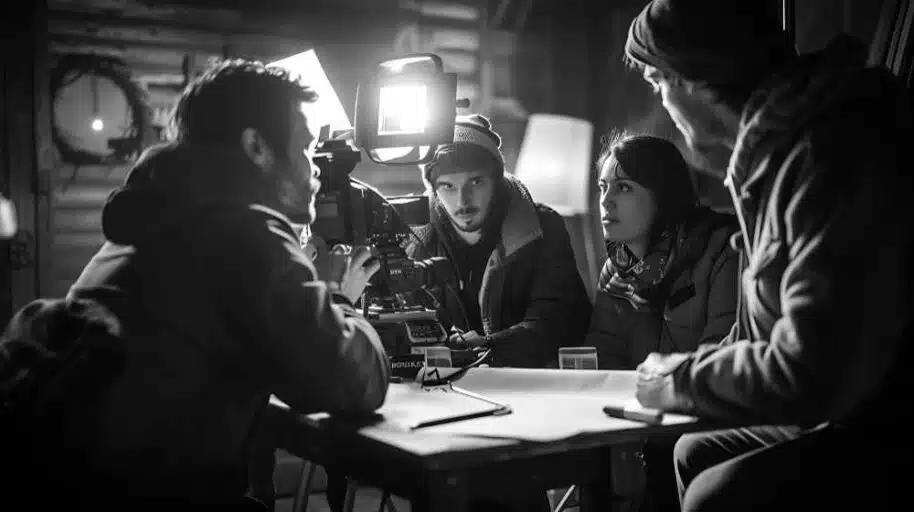
Concept Development
The first step in the pre-production phase is concept development. During this stage, the creative vision for the video is established. This involves brainstorming sessions where ideas are generated, discussed, and refined. The goal is to develop a clear and compelling concept that aligns with the project’s objectives and audience. Key questions addressed in this stage include identifying the video’s purpose, target audience, core message, and desired outcomes. Once the concept is solidified, it serves as the foundation for all subsequent stages of production.
Scripting
Following concept development, the next step is scripting. The script is a detailed written outline of the video’s content, including dialogue, narration, and any instructions for visual elements. A well-crafted script ensures that the video’s message is conveyed effectively and coherently. It also helps to plan the timing and pacing of the video. Multiple drafts may be necessary, with feedback from key stakeholders, to ensure that the script accurately reflects the concept and meets the project’s goals.
Storyboarding
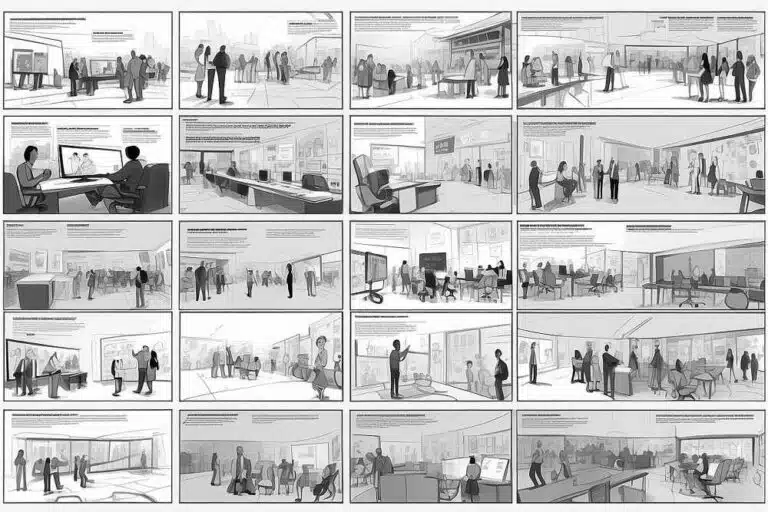
Storyboarding is the process of creating visual representations of each scene in the video. This involves sketching or digitally rendering key frames to illustrate how the video will unfold. Storyboards help to visualize the sequence of events, camera angles, transitions, and key visual elements. They serve as a blueprint for the production team, making it easier to plan shots and ensure that the script is brought to life accurately. Storyboarding also allows for early identification of potential issues and provides an opportunity for creative adjustments.
Scheduling
Effective scheduling is crucial for the smooth progression of the video project. During this stage, a detailed production schedule is developed, outlining timelines for each task and milestone. This includes setting dates for script finalization, storyboarding, shooting, editing, and any other critical activities. Scheduling takes into account the availability of locations, crew, and equipment, as well as deadlines for delivering the final product. A well-organized schedule helps to keep the project on track and ensures that deadlines are met.
Planning Resources
Resource planning is a vital component of pre-production, focusing on identifying and allocating the necessary resources to bring the video project to fruition. This includes securing equipment, locations, props, and any special requirements such as permits or licences. Additionally, casting talent and assembling a skilled production crew are key aspects of resource planning. Budget considerations play a significant role, as they influence decisions about what resources are feasible within the project’s financial constraints. Proper resource planning helps to prevent last-minute challenges and ensures that the production is carried out smoothly and efficiently.
Phase 2 of Video Production Timeline: Production
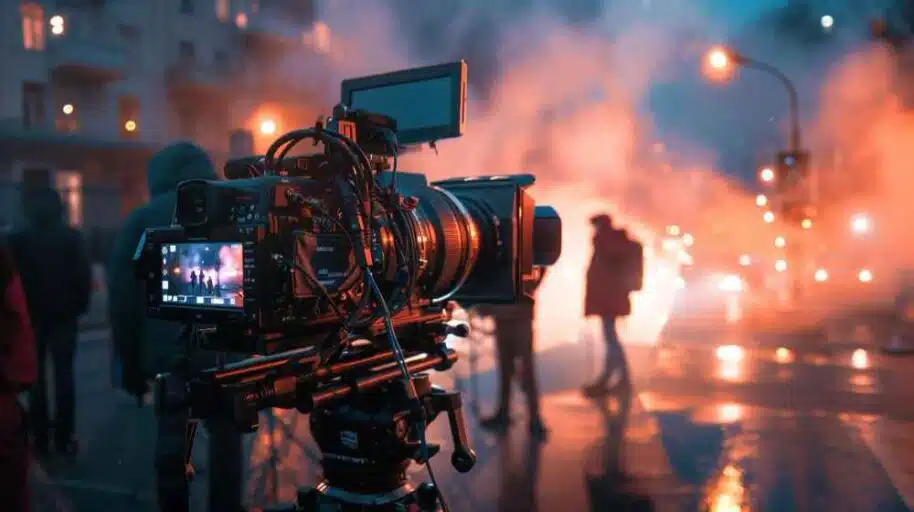
Shooting Schedules
Developing a comprehensive shooting schedule is a pivotal part of the production phase. This schedule outlines when and where each scene will be filmed, considering factors such as location availability, actor schedules, and weather conditions. Detailed shooting schedules help to minimize downtime and ensure efficient use of both time and resources. By planning specific shoot days for each segment, the production team can stay organized and adhere to the overall production timeline.
On-Set Coordination
On-set coordination involves synchronizing all activities and team members to ensure a smooth flow of operations during filming. The on-set coordinator, often the assistant director, oversees the daily shoot, ensuring that everyone is aware of their roles and responsibilities. Effective communication is crucial for addressing any challenges that arise, whether they pertain to technical issues, performance adjustments, or logistical concerns. Coordination also includes maintaining safety protocols and ensuring the well-being of the cast and crew.
Managing Crews and Equipment
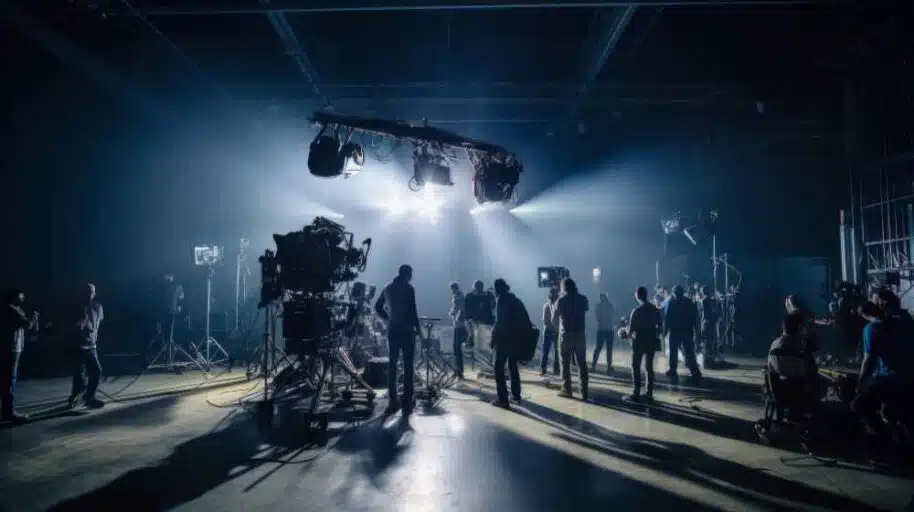
Managing crews and equipment efficiently is essential for a successful production. This involves assigning tasks to various crew members, such as camera operators, sound technicians, lighting specialists, and set designers. Each team must be aware of their responsibilities and work cohesively to achieve the director’s vision. Equipment management includes ensuring that all technical gear is in good working order, setting up equipment properly for each shot, and troubleshooting any issues that may occur. Properly managed crews and equipment help maintain production quality and prevent delays, contributing to the overall success of the video project.
Phase 3 of Video Production Timeline: Post-Production
Editing
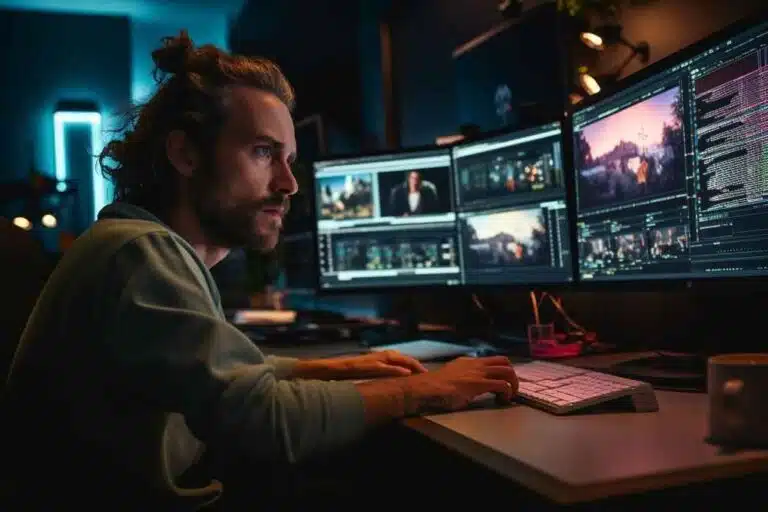
Editing is the first crucial step in the post-production phase, where the raw footage is meticulously reviewed and assembled into a cohesive storyline. The editor works closely with the director to ensure that the final cut reflects their vision, choosing the best takes, arranging scenes, and trimming any unnecessary content. This stage also involves refining the pacing and flow, making sure transitions between scenes are seamless. Editing lays the foundation for the story, setting up the emotional and narrative arcs that will captivate the audience.
Sound Design
Sound design is integral to creating an immersive viewing experience. This process involves layering and mixing various audio elements, including dialogue, sound effects, and ambient noises, to enhance the narrative and evoke emotions. Sound designers may also work on ADR (Automated Dialogue Replacement) to ensure that dialogues are clear and free from background noise. Music is another critical component, often composed or chosen to complement the mood of the scene, adding depth and texture to the film. High-quality sound design can significantly elevate the overall production value.
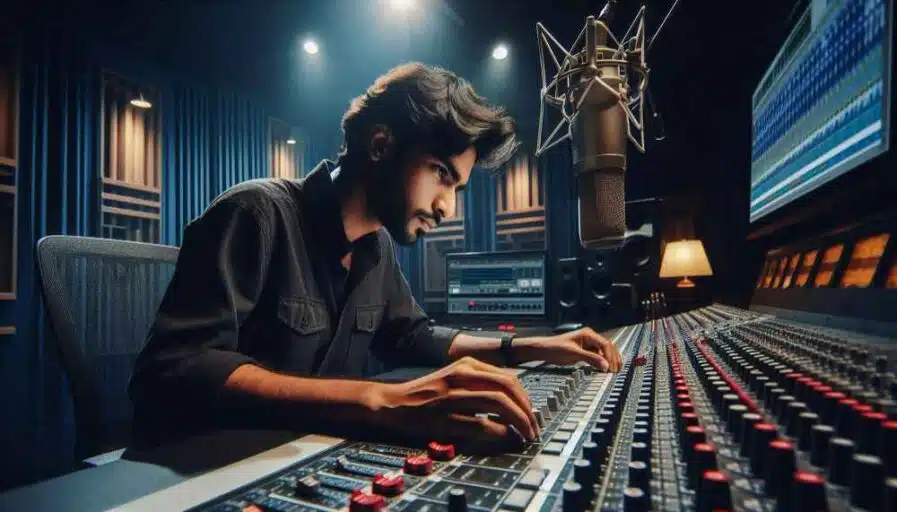
Special Effects
Special effects (SFX) add a layer of visual magic that can bring impossible scenarios to life. Whether it’s through practical effects like makeup and props or digital effects created using CGI (Computer-Generated Imagery), special effects can dramatically enhance the storytelling. This stage may involve creating realistic explosions, fantastical creatures, or otherworldly landscapes, depending on the project’s requirements. Skilled VFX (Visual Effects) artists collaborate with the director and cinematographer to ensure that these elements integrate seamlessly with live-action footage, making the final product visually compelling.
Final Touches
The final touches bring all the post-production elements together, ensuring a polished and professional finish. This last phase includes color grading, which adjusts the color balance and enhances the visual tone of the project, giving it a consistent and aesthetically pleasing look. Final reviews and tweaks are made to both the visual and audio components to ensure there are no errors or inconsistencies. Once the director and post-production team are satisfied, the final cut is rendered and prepared for distribution, marking the end of the creative journey.
History of Video Production Timeline
The evolution of video production has been marked by significant technological advancements and creative milestones. Understanding the history of video production timeline provides valuable insights into the development of filmmaking techniques and the industry’s growth. This journey from early silent films to modern digital cinema showcases the transformative power of innovation in visual storytelling.
Early Beginnings and Pioneering Inventions (1800s)
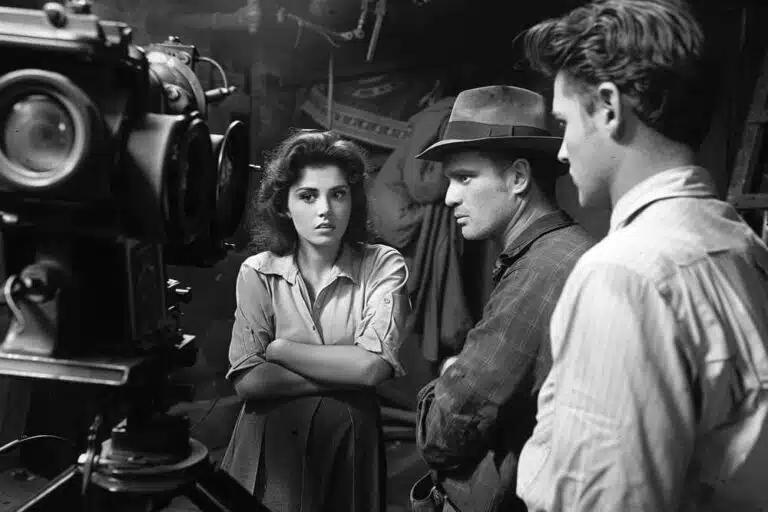
Video production began in the early 1800s with technological advancements and creative experiments. In 1832, Joseph Plateau and Simon von Stampfer developed the phenakistoscope, a spinning disc that created the illusion of motion. John Wesley Hyatt’s 1868 invention of celluloid revolutionized photographic film. Eadweard Muybridge’s 1879 zoopraxiscope projected images in rapid succession. The late 19th century saw Thomas Edison and William Kennedy Laurie Dickson inventing motion pictures. By 1895, the Lumière brothers introduced the Cinématographe, a versatile device for filming and projecting. These innovations paved the way for the modern video production industry.
Advancements Leading to Motion Pictures to Sound & Color (1900s)
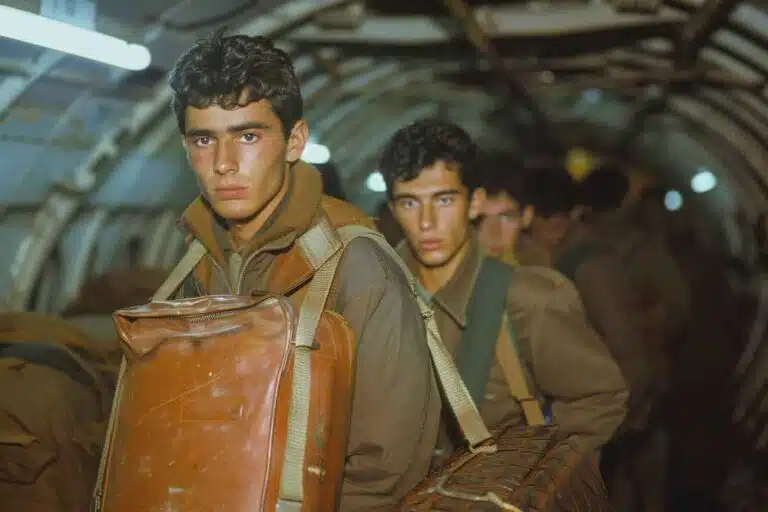
The introduction of color films transformed video production, with “Cupid Angling” in 1918 showcasing early natural color processes. The 1920s saw another leap with “talkies,” revolutionized by films like “The Jazz Singer” in 1927, adding sound to visuals. Mid-20th century innovations continued with Sony’s CV-2000 in 1965, the first portable video recorder, democratizing video recording. Optical storage media in the late 20th and early 21st centuries, such as CDs, DVDs, and Blu-Ray discs, advanced video production and distribution with high-quality storage. These milestones have made video a versatile and influential medium for storytelling and information dissemination.
Modern Day Video Production
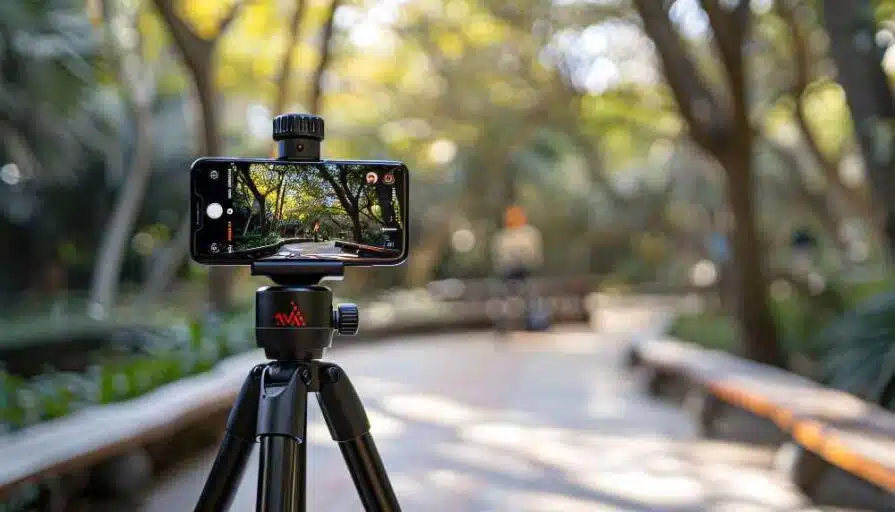
With advanced software and high-quality digital cameras, video production has become a streamlined and accessible process. Sophisticated editing tools like Adobe Premiere Pro and Final Cut Pro enable creators to produce professional-quality content from their home studios. The explosion of video content on platforms such as YouTube, Instagram, and TikTok has revolutionized the industry, allowing anyone with a smartphone to become a content creator. These platforms provide a stage for diverse voices and creativity, reaching global audiences with ease. The democratization of video production has opened new avenues for storytelling and engagement, making it a central aspect of modern media consumption.
How Long Does it Take to Make a Video?
Creating a video can be a complex process, involving multiple stages that each require careful attention and time management. To establish a realistic timeline for your video project, it’s essential to consider the following segments:
- Strategy and preparation: This initial phase involves defining the video’s objectives, target audience, and overall strategy. It typically takes up to 1 week.
- Creative development: During this stage, you’ll brainstorm ideas, create storyboards, and develop scripts. This can take up to 1 week.
- Pre-production: This phase involves finalizing scripts, casting actors, securing locations, and organizing logistics. Depending on the project’s scope, it may take between 1 to 2 weeks.
- Production: The actual filming can be relatively quick but varies greatly with the project’s complexity, ranging from 1 day to 1 week.
- Post-production: Editing the footage, adding special effects, incorporating sound design, and finalizing the video can be time-intensive, usually requiring 2 to 3 weeks.
By understanding these segments and their respective timelines, you can better plan your timeline video productions, ensuring each phase receives the necessary time for high-quality results.
Navigating Your Path to Video Production Success
Understanding and meticulously planning video production timelines is crucial for achieving high-quality results. Each stage of the process, from strategy and preparation to post-production, demands specific attention and time investment to ensure that no detail is overlooked. By recognizing the importance of each segment, you can allocate sufficient time and resources, preventing rushed outputs and enhancing the overall effectiveness of your video project.
It is also beneficial to incorporate historical insights and modern strategies into your planning. The evolution of video production tools and techniques provides valuable lessons that can streamline your workflow and enhance your storytelling capabilities. By applying these practices, you can navigate the complexities of video production with greater ease and confidence. Embrace the knowledge and strategies discussed to amplify the impact of your own projects, creating compelling and engaging content that resonates with your audience.
